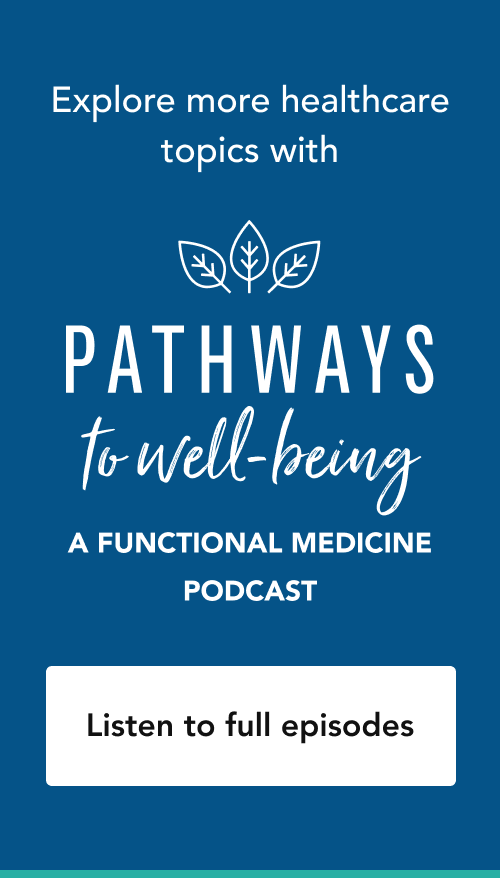podcasts
Dr. Dave Hagedorn on Chronic Pain in the Military Population

When we hear the words traumatic brain injury (TBI) and post-traumatic stress disorder (PTSD), our minds often shift to the image of an American veteran, and rightfully so, although these conditions are not limited to those within this population. In both populations, military and civilian, the incidence of chronic pain is rising; however, military and veteran populations have unique characteristics as well as comorbid conditions like post-concussive syndrome and behavioral health disorders that complicate the treatment of pain.1
TBI and PTSD are frequently associated with chronic pain in medical literature. A systematic review of 23 studies involving 4,206 patients with TBI revealed that, while 51.5% of included patients experienced chronic pain, its frequency in those with mild TBIs was twice that in those with more severe injuries, independent of psychological disorders such as PTSD.2 A 2017 evidence-based structured systematic review found consistent evidence that chronic pain is associated with PTSD.3 Of 19 studies, 16 had found an association between chronic pain and PTSD (84.2%), generating an A consistency rating (consistent multiple studies).3
Dave Hagedorn, PhD, BCN, a former US Army medic who has served as a teaching faculty and clinical staff member at Naval Medical Center, Camp Lejeune, in Jacksonville, NC, explains that the patients he treats have a high kinetic role in war (military action involving active warfare, usually including lethal force), and they experience myriad injuries—blast-related injuries, spinal cord compression–like injuries, loss of limbs:
“As a result of physical trauma to the body, you can imagine that they’re bathing in constant fear of death or they have seen the death of their friends,” says Dr. Hagedorn. “Then you get the additional slow-burn trauma, PTSD. You can think of it as slow-burn brain injury. We have to contend with both of those conditions. A patient comes in with insomnia; they have chronic pain, headache, tinnitus, depression, panic attacks, and then physical pain that maybe would resemble fibromyalgia-type symptoms. So, what do we do?”
Dr. Hagedorn talks about treating chronic pain in the military setting in an interview with IFM Director of Medical Education Dan Lukaczer, ND. He is one of several expert speakers at IFM’s 2019 Annual International Conference on Stress, Pain, and Addiction.
LEARN MORE ABOUT ELECTRICAL THERAPIES FOR PAIN
Studies suggest that American veterans experience higher prevalence of pain and more severe pain than nonveterans, with young and middle-aged veterans suffering the most.4 9.1% of veterans report severe pain compared to 6.4% of their non-veteran counterparts.4 What’s more, research shows that after combat deployment, US military members suffer higher rates of chronic pain (44%) and opioid use (15%) compared to their non-military peers (chronic pain, 26%; opioid use, 4%).5 Other statistics on TBI and PTSD are quite staggering, and research suggests that symptoms of TBI and the “slow-burn trauma” of PTSD often overlap and/or co-occur in the same individual:6
- 17% of Iraq and Afghanistan troops experienced a mild traumatic brain injury (TBI) during deployment, and of these, 59% reported more than one mild TBI. Research suggests that military-related TBI is often associated with high levels of psychiatric distress, including PTSD, anxiety, depression, and substance abuse.7
- 12% of Gulf War (Desert Storm) active and veteran military members suffer from PTSD in a given year. Between 11–20% of those who served in Operations Iraqi Freedom and Enduring Freedom have PTSD in a given year.8 As a comparison, the lifetime prevalence of PTSD ranges from 6.1–9.2% in national samples of the general adult population in the United States and Canada, with one-year prevalence rates of 3.5–4.7%.9
Among the leading factors contributing to these statistics are various mechanisms of concussion and exposure to explosive blasts.6 In one cohort of US military service members returning from Afghanistan or Iraq, 19.6% met criteria for a deployment-related concussion; among those, 97.8% reported having headaches during the final three months of deployment, and more than one in three met criteria for posttraumatic headache; that is headache with onset within seven days after head trauma (or regaining consciousness following head trauma).6
In order to effectively treat this population of patients, Dr. Hagedorn first and foremost stresses the importance of taking a comprehensive medical history. Then it’s a combination of evaluating pain scores, addiction risk, bloodwork for inflammatory markers, and the electrical activity of the brain and the heart. Current medical data also suggests that transcranial magnetic stimulation has the potential to be an effective, complementary treatment modality for patients with chronic neuropathic pain syndromes.10 Dr. Hagedorn uses this therapy with chronic pain patients in his practice. Additionally, acupuncture, muscle biofeedback, and sleep training help his patients develop healthy coping strategies.
This is the future of medicine. This is advanced medicine.
Dr. Hagedorn presented at IFM’s 2019 Annual International Conference (AIC), which explores the intersection of stress, pain, and addiction in clinical care. Before the conference he said about his talk, “At the conference, I want to make sure that clinicians are aware of what the science is, what the validity is, and what the empirical support is for the use of electrophysiology markers. Where is the evidence weak and where is it strong? It’s incumbent on every doctor to have that knowledge and to know how to do it confidently. We will cover the use of electrophysiology tools, we will cover subjective testing, objective testing, and multi-modal treatment options. We will be talking about the pain scales, we’ll be talking about the nervous systems … and how do you measure those?
We’ll be talking about the different modes, or multi-modal treatment options like electroencephalography, heart rate variability, neuromodulation, neurostimulation, and the empirical support for each. It’s an aggressive agenda to try to cover not only what pain looks like in the brain, but also how you measure it.
We’ll be talking about the different modes, or multi-modal treatment options like electroencephalography, heart rate variability, neuromodulation, neurostimulation, and the empirical support for each. It’s an aggressive agenda to try to cover not only what pain looks like in the brain, but also how you measure it.
References
- Schoneboom BA, Perry SM, Barnhill WK, Giordano NA, Wiltse Nicely KL, Polomano RC. Answering the call to address chronic pain in military service members and veterans: progress in improving pain care and restoring health. Nurs Outlook. 2016;64(5):459-484. doi:10.1016/j.outlook.2016.05.010
- Nampiaparampil DE. Prevalence of chronic pain after traumatic brain injury: a systematic review. JAMA. 2008;300(6):711-719. doi:10.1001/jama.300.6.711
- Fishbain DA, Pulikal A, Lewis JE, Gao J. Chronic pain types differ in their reported prevalence of post-traumatic stress disorder (PTSD) and there is consistent evidence that chronic pain is associated with PTSD: an evidence-based structured systematic review. Pain Med. 2017;18(4):711-735. doi:10.1093/pm/pnw065
- National Institutes of Health. Veterans endure higher pain severity than non-veterans. Published December 13, 2016. Accessed January 30, 2019. https://www.nih.gov/news-events/news-releases/veterans-endure-higher-pain-severity-nonveterans
- Toblin RL, Quartana PJ, Riviere LA, Walper KC, Hoge CW. Chronic pain and opioid use in US soldiers after combat deployment. JAMA Intern Med. 2014;174(8):1400-1401. doi:10.1001/jamainternmed.2014.2726
- Nelson DV, Esty ML. Neurotherapy for chronic headache following traumatic brain injury. Mil Med Res. 2015;2:22. doi:10.1186/s40779-015-0049-y
- Barnes DE, Byers AL, Gardner RC, Seal KH, Boscardin WJ, Yaffe K. Association of mild traumatic brain injury with and without loss of consciousness with dementia in US military veterans. JAMA Neurol. 2018;75(9):1055-1061. doi:10.1001/jamaneurol.2018.0815
- Gradus JL. How common is PTSD in veterans? US Department of Veterans Affairs, National Center for PTSD. Updated September 24, 2018. Accessed January 30, 2019. https://www.ptsd.va.gov/understand/common/common_veterans.asp
- Sareen J. Posttraumatic stress disorder in adults: epidemiology, pathophysiology, clinical manifestations, course, assessment, and diagnosis. Updated October 4, 2018. Accessed January 30, 2019. https://www.uptodate.com/contents/posttraumatic-stress-disorder-in-adults-epidemiology-pathophysiology-clinical-manifestations-course-assessment-and-diagnosis
- Young NA, Sharma M, Deogaonkar M. Transcranial magnetic stimulation for chronic pain. Neurosurg Clin N Am. 2014;25(4):819-832. doi:10.1016/j.nec.2014.07.007




